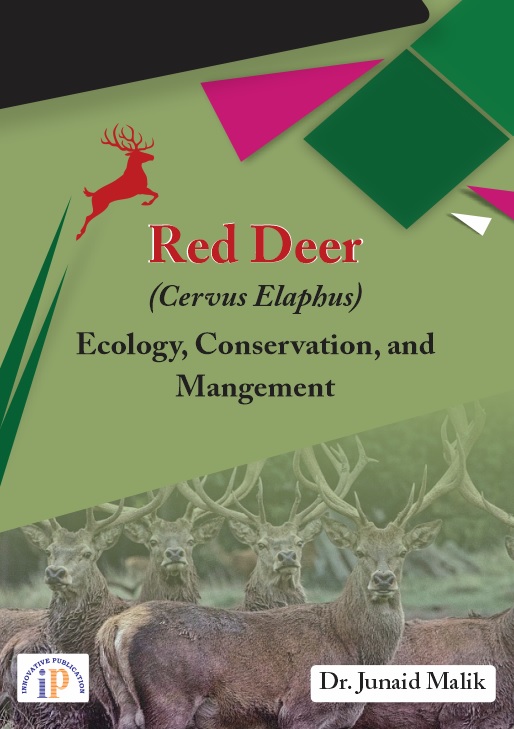Red Deer (Cervus elaphus): Ecology, Conservation, and Management
Dr. Junaid Malik received B.Sc. (2008) from the University of Kashmir, Srinagar, J&K; M.Sc. (2010) in Zoology from Barkatullah University, Bhopal, Madhya Pradesh; and PhD (2015) in Zoology from the same university. He completed his B.Ed program in 2017 from the University of Kashmir, Srinagar, J&K. He started his career as Lecturer in School Education Department, Government of J&K for 2 years. Dr. Malik is now working as a Lecturer in Department of Zoology, Government Degree College, Bijbehara, Kashmir (J&K) and is actively involved in teaching and research activities. He has more than 8 years of research experience. His areas of interest are ecology, soil macrofauna, wildlife biology, conservation biology etc. Dr. Junaid Malik has published 21 research articles and technical papers in International peer reviewed Journals like Springer, Elsevier, and T&F etc. He has authored 3 books, edited 2 books, 11 book chapters and more than 10 popular editorial articles. He is also serving as editor and reviewer of several journals with a reasonable reputation. He has participated in several State, National, and International conferences, seminars, workshops, and symposia with more than 20 conference papers are to his credit. He is the life member of SBBS (Society for Bioinformatics and Biological Sciences). ... Read more Read less
The Red Deer (Cervus elaphus) is one of the largest deer species. The Red Deer inhabits most of Europe, the Caucasus Mountains region, Asia Minor, Iran, parts of western Asia, and central Asia. It also inhabits the Atlas Mountains region between Morocco and Tunisia in northwestern Africa, being the only species of deer to inhabit Africa. Red Deer are held in captivity for a variety of reasons. The meat of the deer, called venison, was until recently restricted in the United Kingdom to those with connections to the aristocratic or poaching communities, and a licence was needed to sell it legally, but it is now widely available in supermarkets, especially in the autumn. The Red Deer can produce 10–15 kg (22–33 lb) of antler velvet annually. The Red Deer is the fourth-largest deer species behind moose, elk, and sambar deer. It is a ruminant, eating its food in two stages and having an even number of toes on each hoof, like camels, goats, and cattle. Mature Red Deer (C. elaphus) usually stay in single-sex groups for most of the year. During the mating season, called the rut, mature stags compete for the attentions of the hinds and will then try to defend the hinds they attract.
This book explores their basic biology, taxonomy, behaviour, feeding patterns and ecology, including management for sport hunting, conservation or recovery of threatened populations, and resolution of conflict with humans in native and introduced lands. The book also deliberates on the diseases of Red Deer that are of major management concern and the center of most disease research for cervids.
... Read more Read less










